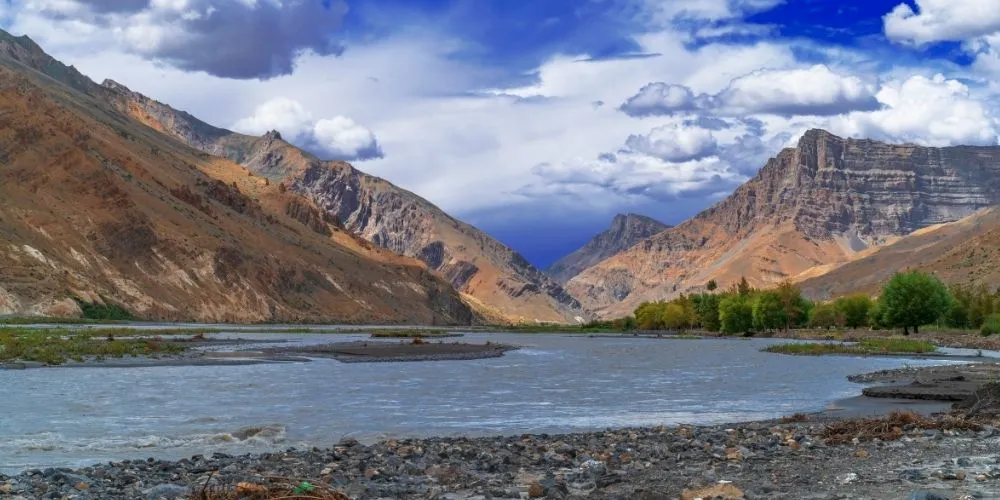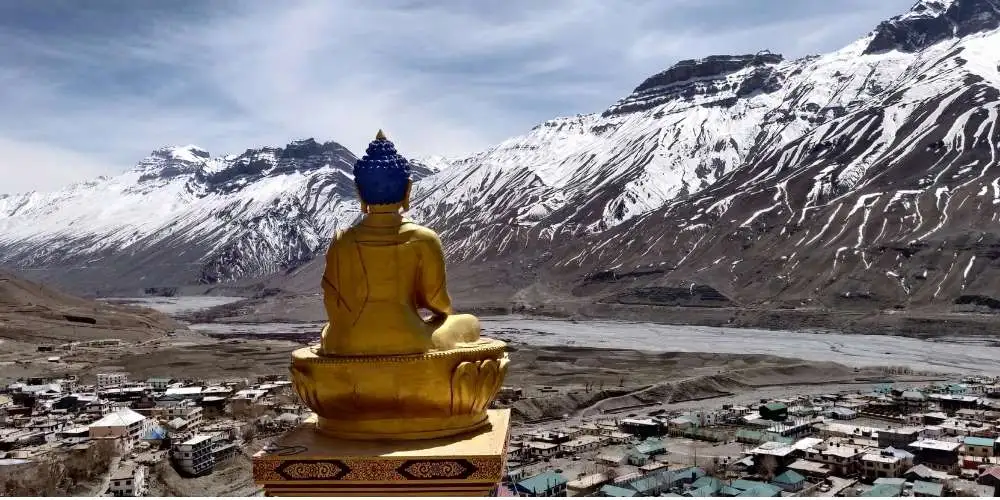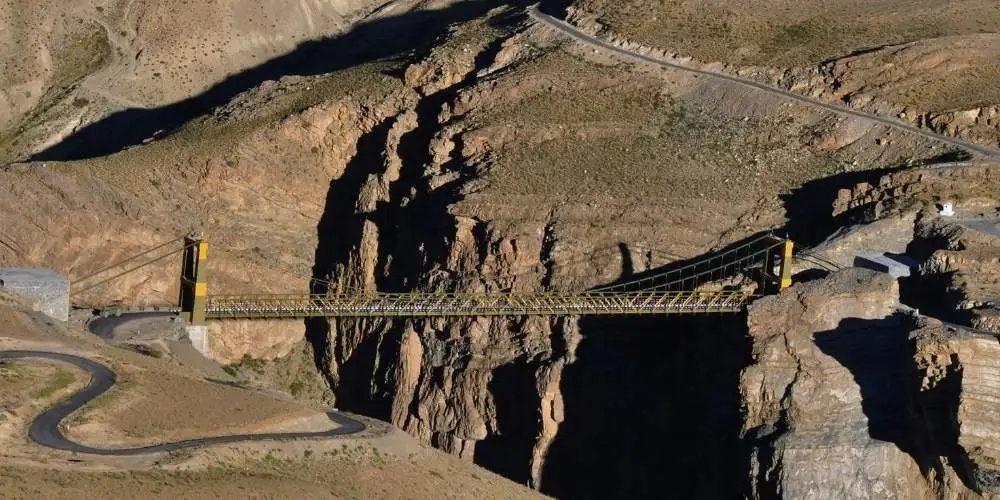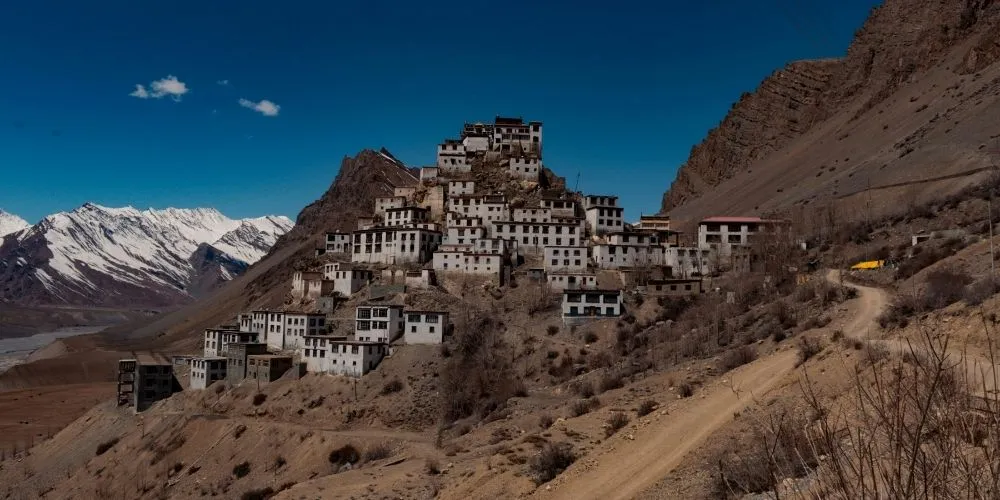Tucked away in the rugged folds of Himachal Pradesh, Spiti Valley feels like India’s final frontier; the kind of place where every bend in the road reveals a new miracle of nature, skies look more blue than in a swimming pool, and every night glows under a canopy of a thousand stars. With Kaza as its buzzing heart, the moonlit shores of Chandratal Lake, and the thrilling Manali to Spiti Valley drive, this region is a siren-song for the wild at heart, the wanderers, the trekkers, and the peace seekers.
How to Reach Spiti Valley: The Road Less Travelled
Manali to Spiti Valley is the classic but more adventurous route. The 196 km road from Manali to Kaza, the valley’s main town, is open from June to mid-October and takes you over the Atal Tunnel, past Rohtang Pass, and up to Kunzum Pass before a heart-stopping descent into Spiti’s barren beauty. Expect a 4-7 hour drive if conditions are good; more with photo stops and quick snack breaks at roadside dhabas.

The other option is the Shimla-Kinnaur route, a longer, gentler ascent, open almost all year, taking two days via Narkanda, Reckong Peo, and Tabo. Many prefer entering from Shimla for better acclimatisation and returning via Manali for the epic finale to the trip.
Pro Tip: Always check road conditions before your trip; landslides and weather can close passes overnight.
Permits for Spiti
Indian citizens: No permit is required to enter Spiti Valley from either Manali or Shimla–except if you drive beyond Kaza toward the Tibet border (outposts like Shipki La). If you’re heading via Manali and wish to cross Rohtang Pass (not necessary if only using the Atal Tunnel), a Rohtang Pass permit (green tax/environmental fee) is needed; apply online or at the SDM office in Manali.
Foreign nationals: Need an Inner Line Permit (ILP) to cross the Kinnaur–Spiti border (from Shimla side). These can be obtained at Reckong Peo, Shimla, or Delhi. Carry your passport, visa, itinerary, and passport-size photos.
Pro Tip: Carry multiple photo IDs and keep digital and printed permit copies handy for sudden checkpoints.
Best Time to Visit Spiti Valley
The best time to visit Spiti Valley is from late May through mid-October. The snow melts, roads are open, and the valley is accessible by both routes. Temperatures are pleasant; days range from 12°C–20°C but nights can dip below 5°C.
Spring (May–June) is vibrant and mostly green, while September–October’s clear skies and festivals are magical. Winters (November–April) are for diehard snow lovers and involve braving bone-chilling cold and minimal transport.
Serene Spaces to Stays in Kaza and Beyond
Kaza, the biggest town in Spiti Valley, offers a mix of classic hotels, lively guesthouses, homestays, and budget hostels:

- Hotel Spiti Villa Himalayan Brothers: Stunning mountain views, local cuisine, near Key Monastery; a traveller’s favourite for comfort and authenticity.
- Spiti Village Resort: Classic Spitian hospitality with charming rooms, monastery views, and hearty meals.
- Parasol Camps & Retreat: Glamping-style setups on Spiti’s wild edges for camping vibes in stylish spaces.
- Khenzey Homestay and Airbnbs: Cosy mud houses with a local touch, just steps from the Kaza bazaar.
- Camping Near Chandratal Lake: You can’t camp by the lake itself (ecological restrictions), but tented camps 2-3 km away are magical; think star-studded skies, local “Chacha-Chachi Dhaba” meals, and a short hike to the turquoise waters.
Chandratal Lake
Chandratal (Moon Lake) is perched at 14,100 feet and is a highlight of any Spiti trip. The best way to reach is via Batal, then drive/cycle to the parking lot, from where it’s a gentle 2 km hike up to the dazzling blue lake. Remember:
- No swimming; water’s glacial and sacred.
- Only use designated camps for overnights; self-camping isn’t allowed by the lakeshore.
- Watch the sunrise and do astrophotography; the Milky Way shines clearer than anywhere in India.
- In addition, Baralacha La–Chandratal and Hampta Pass–Chandratal are famous treks for fitter adventurers.
Acclimatisation & Packing: High-Altitude Wisdom
Start from Shimla–Kinnaur if possible to gently gain altitude. Rest in Kaza (3,800m) for a day before heading higher. Hydrate, eat light (rice, potatoes, thukpa, Maggi), and avoid alcohol and strenuous hikes on Day 1. Carry ginger, garlic, ORS, and nausea preventing/curing medicines as per doctor’s advice to help avoid Altered Mental Status (AMS) due to high altitude and lack of oxygen.

Packing List:
- Layers of clothing are a must as it’s sunny in the day and freezing after dark.
- Sturdy shoes, a rain-jacket, balaclava/gloves for wind, UV sunglasses, and high SPF.
- Bottle for water (avoid plastic waste).
- Camera, power bank, headlamp, and extra memory cards.
- Snacks like dry fruits, glucose, chocolate.
- Basic medical kit, ID/permits, and cash (ATMs often run dry).
- Light but warm sleeping bag for camping; camps provide basics if you pre-book.
What to Eat: Comfort Foods of the Cold Desert
- Thukpa and Momos: Every café serves warming Tibetan noodle soups and dumplings.
- Pahadon Wali Maggi and Parathas: Available at every dhaba.
- Yak cheese toast, local tea (butter tea if brave): Try these at Kaza cafés or Kibber’s hillside kitchens.
- Dhabas at Batal/Chandratal: Homely food, dal-rice, eggs, and stories from travellers. Vegetarian food is easiest to find; non-veg options are limited, especially deeper into the valley.
Trekking, Hiking, and Lesser-Known Gems in Spiti Valley
- Pin Valley National Park: Untamed beauty, rare Himalayan wildlife (snow leopard, ibex); ideal for trekkers and nature lovers.
- Key Monastery: Spiti’s iconic 1,000-year-old gompa; meditate with monks, enjoy valley views.

- Tabo Monastery: 10th century “Ajanta of the Himalayas” with rare murals and ancient scripture.
- Hikkim, Komik, and Langza: World’s highest post office (Hikkim), fossil hunting, and the gigantic Buddha statue.
- Dhankar Lake and Monastery: Cliff-top monastery with a prayer flag-draped lake, accessible by a challenging trek.
- Kibber Village: Starting point for the elusive snow leopard trek, home to a high-altitude wildlife sanctuary.
Off-beat suggestions: Lhalung Monastery, Demul Village, and the ancient Mudh Village are picture-perfect and travellers’ favourites.
Suggestions for a 10-day Itinerary
- Day 1-2: Manali – Atal Tunnel – Batal (overnight) – Chandratal.
- Day 3-6: Chandratal – Kunzum Pass – Kaza (base for day trips).
- Day 7-9: Langza/Komik/Hikkim, Pin Valley, Key Monastery, Tabo.
- Day 10: Return to Manali or extend to Shimla.
Bonus: Pair Spiti with a Ladakh extension from Kaza, or a detour to Sangla/Chitkul for cherry-blossom valleys.
Spiti Valley isn’t simply a trip; it’s a gentle push out of the ordinary, a reminder of India’s wild side, and a tune that lingers in your soul long after you’ve left its lunar valleys. Come prepared, come humble, and let serendipity be your guide.
By: Anushka Singhal
